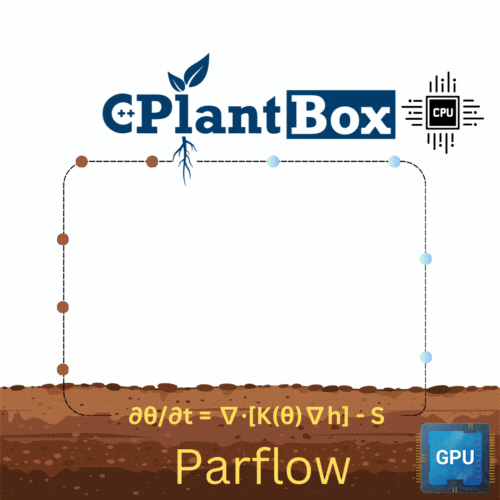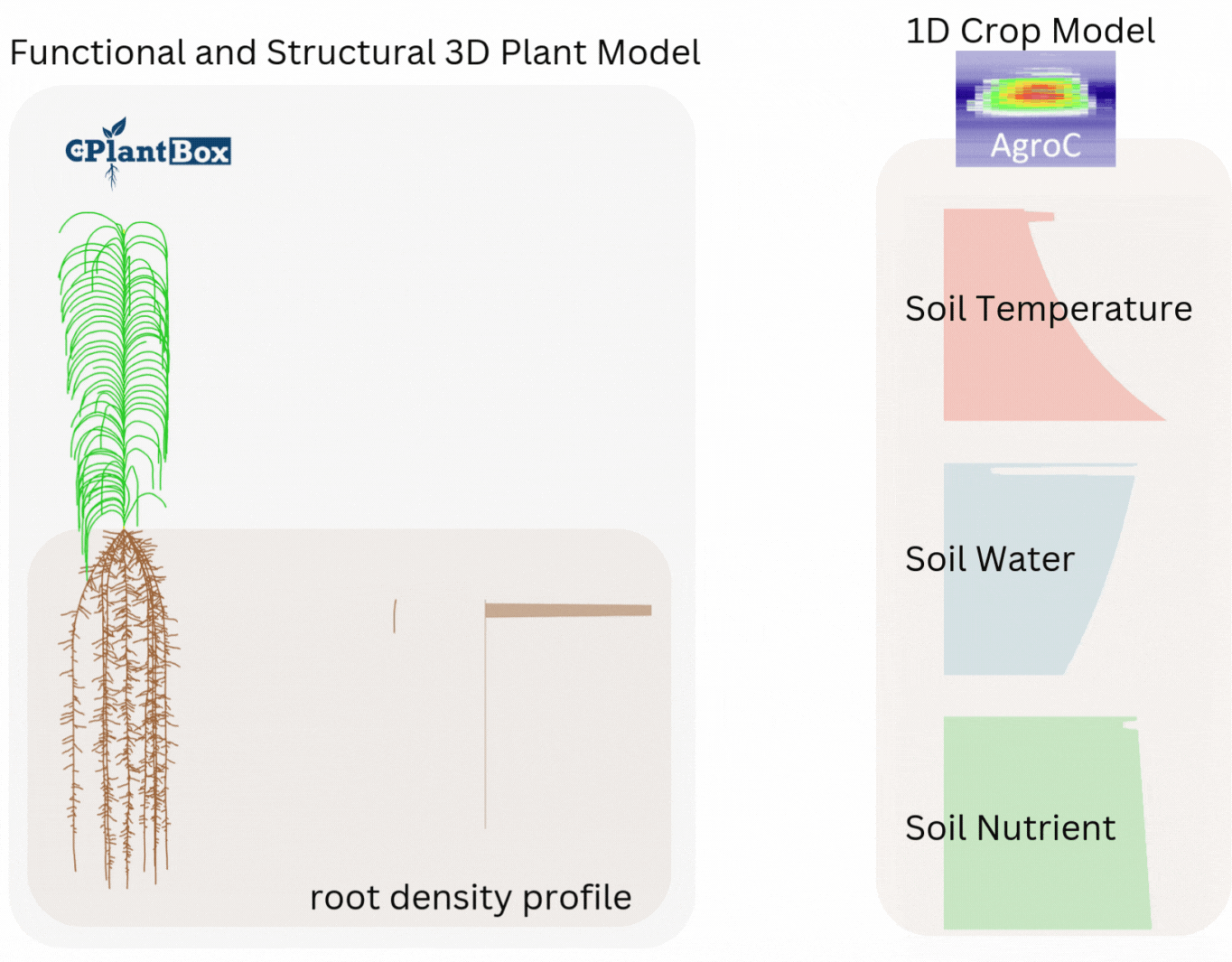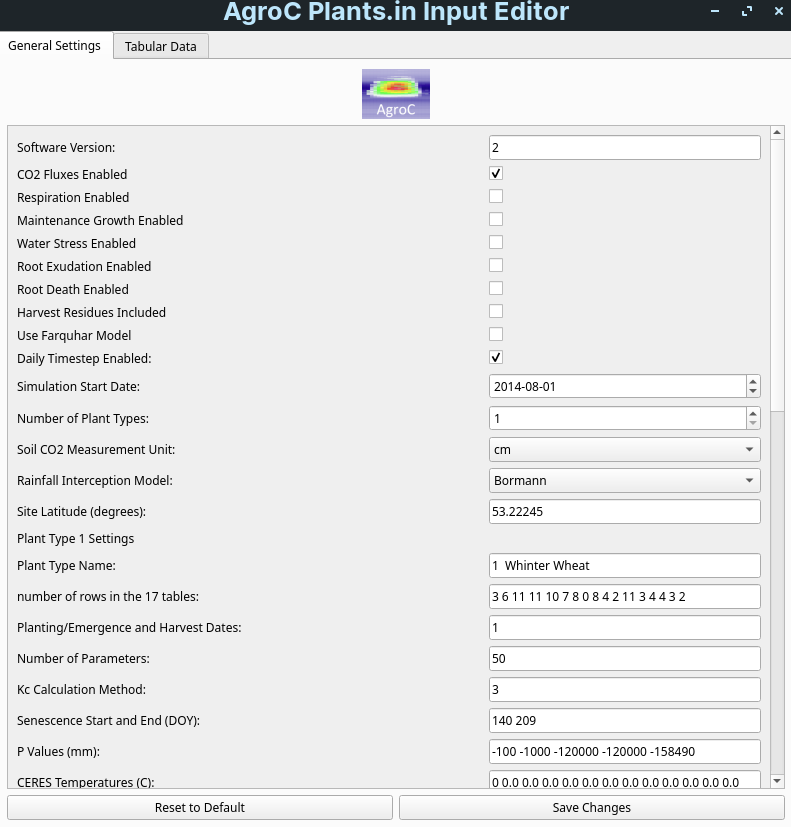⚡ ParFlow-CPlantBox Integration ⚡

We are developing a performance-oriented coupling between ParFlow and CPlantBox to address computational bottlenecks in soil-water dynamics. Currently, the soil water flow calculations and Richards’ equation solver in Plant Modeling represent the most time-consuming components of the simulation. By leveraging ParFlow’s highly optimized GPU-accelerated Richards’ solver, we aim to significantly reduce computation time while maintaining CPlantBox’s detailed root architecture modeling. This coupling strategy allows us to offload the intensive soil-water calculations to GPU while keeping the efficient root growth algorithms of CPlantBox.
- 🌾 Replacing CPlantBox’s dependency on CPU-based Richards’ solver (DuMux) with ParFlow’s GPU-accelerated version to overcome current performance limitations.
- 🌍 Developing an efficient interface to handle data exchange between CPlantBox’s root architecture system and ParFlow’s soil domain.
- 🌦️ Creating benchmark scenarios to quantify performance improvements and computational speedup.
- 💧 Optimizing memory transfers between CPU and GPU to maintain efficiency gains from parallel execution.
🔄 AgroC-CPlantBox Integration 🔄

We are currently updating AgroC to read root data generated by external sources or other modelling tools such as CPlantBox. This integration ensures that dynamic root growth information can directly influence soil and crop simulations in AgroC. Additionally, we are implementing an updated sink term in AgroC for more accurate water and nutrient flow modeling.The current implementation is relatively simple, so we are developing a more mechanistic sink term based on root hydraulic properties, which includes root conductivity data from CPlantBox. This loose coupling between the two models will significantly enhance their synergy, simulating more realistic root-soil interactions.
- 🌾 Implementing a new mechanistic sink term in AgroC based on the parallel root model approach, incorporating variables such as K_r (radial root conductance), K_x (axial root conductance), and SUF (standard uptake fraction).
- 🌍 Integrating CPlantBox-generated dynamic root architecture data, including root length density (RLD) and root distribution, directly into AgroC’s soil-water-plant simulations.
- 🌦️ Developing a bidirectional data exchange: AgroC provides soil water potential, nutrient availability, and temperature data to inform root growth in CPlantBox.
- 💧 Implementing alpha-supply functions and total supply factors in AgroC to represent maximal water uptake under varying soil conditions.
🐳 Dockerization of Models 🐳
One of our current initiatives involves containerizing key DAA models like CPlantBox and AgroC to enhance accessibility and deployment. These models are specifically built for Linux environment and it is always not straightforward for windows users. Using 🐳 Docker 🐳, we are creating flexible environments where models can run consistently across various systems. This process facilitates collaboration, reproducibility, and integration with other tools.
docker pull satraox/cplantbox-gui:tagname.
🌾 The Jupyter version of CPlantBox, for running examples directly in the browser, will soon be available at: docker pull satraox/ cplantbox-jupyter:tagname.
🌳 AgroC is currently in the process of being ⚙️ containerized. This will help non-linux users to get started with this crop model.🤖 Custom GPT Development 💬
In support of project-wide accessibility, we are building custom GPT models to offer on-demand assistance for researchers and collaborators. While our current GPT models are available to ChatGPT Plus subscribers, we recognize the need for more inclusive access. In response, we are exploring open-source alternatives, such as LLaMA-based models, to make these tools freely accessible to all researchers and students. Currently, the Digital Agricultural Avatar GPT provides project-wide support, while the CPlantBox-specific GPT assists with questions around that this particular model. These tools are designed to increase engagement and streamline user interactions. We have plans to develop GPT’s for other models too
- 🌾 Explore our Project-wide DAA GPT: DigiAg Avatar
- 🌍 Explore our CPlantBox GPT: CPlantBox GPT
- 🌦️ Future plans include developing similar tools for our other models, prioritizing open accessibility.
📡 Exploring New Model Integrations🌀
We are investigating potential integrations of radiative transfer models, such as SCOPE, with CPlantBox. This integration will allow for simulations of how root zone processes influence remote sensing data, particularly in capturing spectral signatures from aboveground vegetation. By linking models like CPlantBox with SCOPE, we aim to bridge the gap between root zone activity and remote sensing applications.
🖥️ Graphical User Interface ⚙️

We are developing a Graphical User Interface (GUI) for easier manipulation of input files needed for AgroC. Our aim is to make it easier for users to set up simulations and explore various crop scenarios efficiently. Our ultimate aim is to run AgroC through this GUI and interpret simulation results